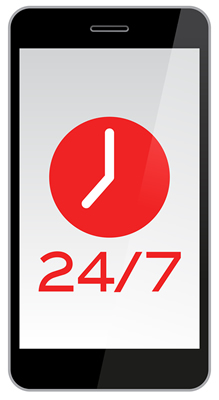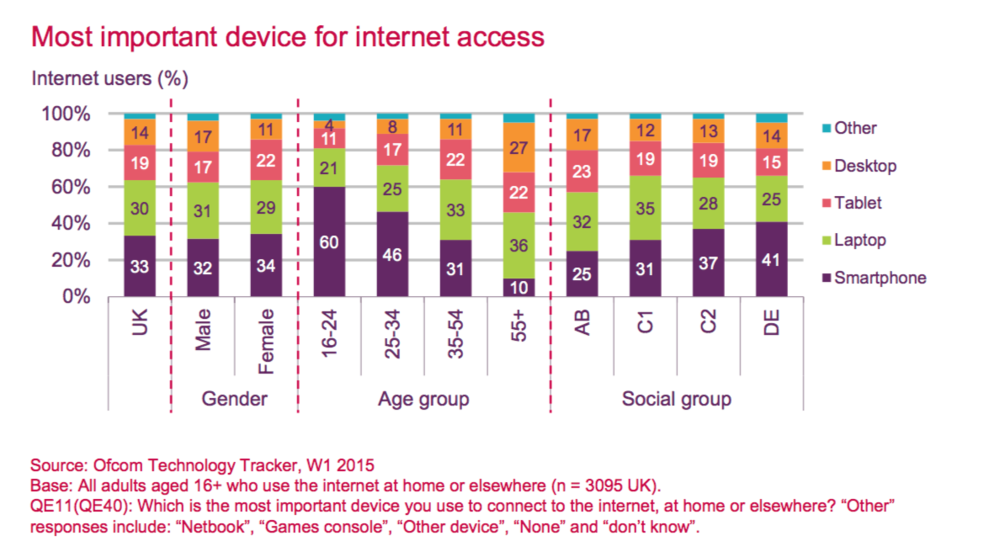 There are over 2 billion smartphones in use right now. And in developed countries, penetration is approaching 100%. Mobile phones have changed consumer behaviour more than any technology in recent memory, perhaps since the invention of the car.
There are over 2 billion smartphones in use right now. And in developed countries, penetration is approaching 100%. Mobile phones have changed consumer behaviour more than any technology in recent memory, perhaps since the invention of the car.
This change has profound implications for the interactions between companies and their customers. According to a recent study, 77% of those ages 18 to 24 use mobile devices at least once per month for customer support.
Many companies are struggling with how to correctly adapt their customer services playbook. Too often, this playbook changes at a pace too slow to keep up with the shift in consumer behaviour we’re seeing today. Getting mobile customer service right is an enormous topic, but let’s take a bird’s eye to break it down into more manageable pieces.
Mobile is the Consumer’s Primary Choice
It’s important to understand how the relationship between the “mobile internet” and rest of the internet has been inverted. Analyst Benedict Evans puts it this way:
Mobile is not a subset of the internet anymore, that you use only if you’re waiting for a coffee or don’t have a PC in front of you – it’s becoming the main way that people use the internet. It’s not mobile that’s limited to a certain set of locations and use cases – it’s the PC, that can only do the web… and only be used sitting down…there is not the ‘mobile internet’ and the internet. Rather, if anything, it’s the internet and the ‘desktop internet’.
As this chart from OfCom shows, the smartphone is the most important device for internet access

Gartner’s Michael Maoz (one of our Top Call Center Analysts) follows to the next logical step saying that mobile
… is emerging as the consumer’s primary choice for all possible service activity … Complementing mobile self-service with assisted-service is a natural and required evolution of the mobile channel. [Emphasis added.]
In short, customers have already made the transition. The only question is, will you adjust to their new preferences, or let your competitors do it first?
Mobile is Not a Channel
The “multi-channel” challenge is front-and-center for every contact center today. Organizations are working hard to understand which channels of communications their customers prefer, how those channels interact and how to deliver the best experience on each channel. One mistake we see quite often is to think of “mobile” as a channel, in the same category as “email” or “chat”. Analysts perpetuate this mistake with charts like this one from Harris Interactive:

In the chart above, every channel is either sometimes or always performed with a mobile device! The right way to think about mobile is as a platform enabling multiple channels.
Analyst Benedict Evans puts it this way:
On a PC the web browser was the internet platform, but on a smartphone it’s the entire device and the browser is turned from ‘the internet’ to one icon, just a phone calls turned from the purpose of the device to just one icon.
Getting it Right
Even though this trend has been obvious for several years, companies have been slow to adapt. 90 percent of consumers said they have had poor experiences seeking customer support on mobile, according to a survey of 312 U.S. adults by Software Advice.
Here is a basic outline of what companies need to do to get it right:
-
- Web-based interaction – It is imperative to make your website mobile-friendly. If you force users to zoom-in and pan around to find your phone number, you’ve already lost them.
-
- SMS – This a great channel for basic notifications and basic self-serve functions. In a recent survey, 64% of respondents with texting capabilities said they’d prefer to text with rather than talk to customer service agents. And 44% said they’d rather push a button and start a text conversation on the spot than wait on hold to talk to an agent.
-
- Mobile app – Having a dedicated mobile app is not right for every business. Consumers have limited “real estate” on their phones for apps, and if interactions with your company are infrequent, they may not deem it worthwhile to install your app. But if you do have an app, it is essential to offer click-to-call-back so that customers can escalate to an agent conversation if needed. Sadly, most apps simply display their phone number on the “contact us” page. This is poor way to switch channels because all context with the customer is lost.
-
- Plain-old phone calls – Yes these are still an important part of the channel mix. In some ways, live-agent conversations have gotten more critical. That’s because all of the “easy” interactions are now handled by self-serve channels. When customers call in, it is often because there is a serious issue.
Where Call-Backs Fit in
People typically think of call-backs as a great alternative to waiting on hold. (“Press 1 and you’ll be called back when it is your turn.”) But they also play a very important role in a successful multi-channel strategy. Namely, they allow customers to transition smoothly from any channel into a live agent conversation. Going back to the list above, the image below illustrates how call-backs can be used to allow “escalation” from each channel.

Why is this so important? Because we know, at an instinctive level, why a live agent conversation stands apart: When you have a tough issue to discuss, when there is an urgent matter, when the other options have left you frustrated, we want to talk to another human to cut through it all.
Adding escalation paths to all of your mobile-related channels may sound like a daunting task. But Fonolo’s cloud-based product allows you to exactly that, without any changes to your existing call center infrastructure. If your customer service strategy is not yet fully “mobile ready” we invite you to take a look at Fonolo: view a short video or contact us for a live demo here.

Discover the Contact Center Trends That Matter in 2024
Dig into industry trends and discover the changes that matter to your business in the year ahead.